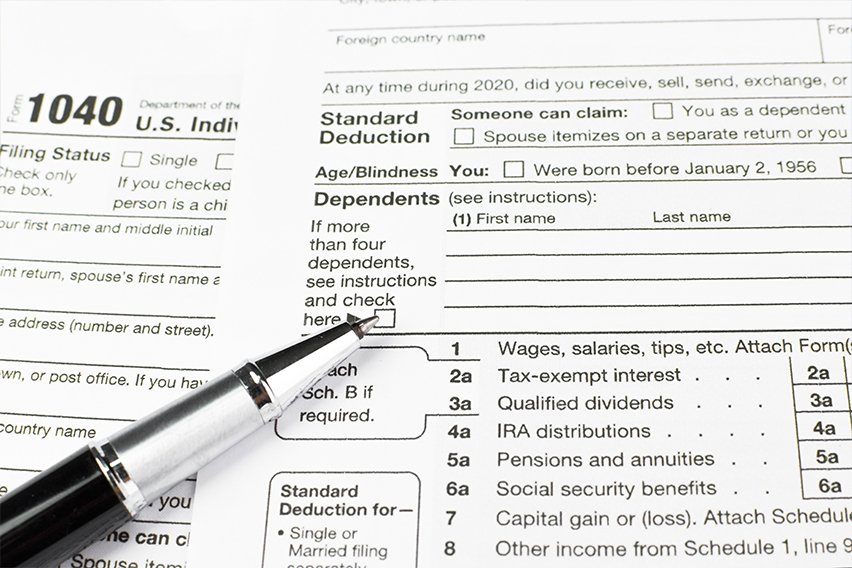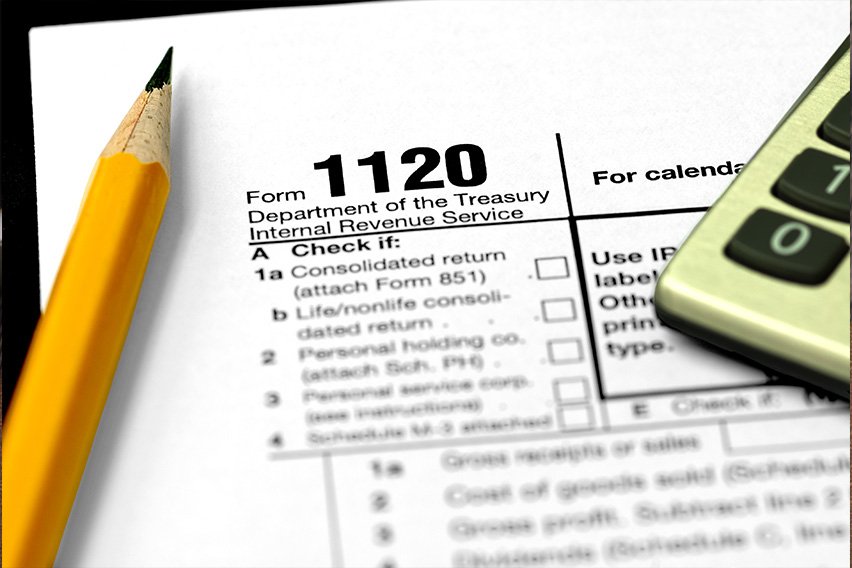How to Calculate Withholding Tax (4 Easy Steps)

Small businesses need to understand how to calculate federal income tax withholding to withhold the correct amount of federal taxes from their employee paychecks. Employers report and pay these taxes to the U.S. Treasury on behalf of employees (trust fund taxes).
Employers calculate tax withholding based on employee’s gross wages, their Form W-4, and the IRS’s federal income tax withholding tables. Small business owners should learn how to calculate withholding taxes to make sure employees are being taxed at the correct rate.
So how do you calculate tax withholding as an employer? There are two main methods small businesses can use to calculate federal withholding tax: the wage bracket method and the percentage method.
Key Takeaways
- Federal income tax withholding is calculated using either the wage bracket or percentage method.
- Employers calculate the amount of tax to withhold based on the information provided in Form W-4, employee gross pay, and IRS tax withholding tables.
- Employees can claim withholding allowances to reduce the amount withheld from their paychecks.
- The amount you withhold will depend on the tax bracket an employee’s income falls into, their filing status, and any allowances they claim.
Table of Contents
- How to Calculate Withholding Tax
- What are Withholding Allowances?
- Income Tax Rates for 2024 and 2025
- Conclusion
- FAQs About How to Calculate Withholding Tax
How to Calculate Withholding Tax
The employer first needs to gather relevant information from W-4 forms filed by their employees, then use the IRS withholding tables to calculate federal income tax withholding.
Here are the steps to calculate the amount of tax to withhold:

1. Gather Relevant Documents
First, gather all the documentation you need to calculate the federal income tax withholding amount. You will need the following:
- Your employees’ W-4 forms
- Each employee’s gross pay for the pay period
- The IRS income tax withholding tables (IRS Publication 15-T) and tax calculator for the current year
2. Review the Employee’s W-4 Forms
Next, make sure you have the correct forms for your employees. You’ll need to refer to the employee’s Form W-4 to find the information relevant to the federal income tax withholding calculations. This includes their filing status, tax credits claimed for dependents, additional income information (e.g. more than one job at a time or a spouse that also works), and any additional amounts the employee requests to be withheld.
Any major life change, such as getting a new job, getting married or divorced, or having children, can have a big impact on the federal taxes an employee owes. So it’s a good idea for employees to review their income tax withholding and update their W-4 when their circumstances change.
3. Review Payroll Details
You’ll need to gather information from your payroll records to calculate employee federal tax withholding. Here’s the information you’ll need for your calculations:
- Payroll period details, including the frequency of your pay periods (weekly, biweekly, semi-monthly, or monthly) and the amount of time for that particular period
- The gross pay amount for the pay period for each employee, i.e., the total amount for the pay period, either in salary or taxable wages before deductions.
4. Choose Your Calculation Method
Once you’ve gathered all the W-4 and payroll information, you need to choose a calculation method. There are two methods you can choose from:
The Wage Bracket Method
The wage bracket method of calculating tax withholding is the simplest of the two methods. You’ll use the IRS income tax withholding tables to find each employee’s wage range. The instructions and tables can be found in IRS Publication 15-T.
The Percentage Method
The percentage method is more complex, and instructions are also included in IRS Publication 15-T. The instructions differ based on whether you use an automated payroll software or a manual payroll system. The worksheet walks you through the calculation, including determining the employees’ wage amount, accounting for tax credits, and calculating the final amount to withhold.
Keep in mind that these instructions only cover withholding federal income tax. Depending on where your employees live or work, you may also need to withhold state income taxes and local income taxes. Employers also need to withhold taxes for the Federal Insurance Contributions Act (FICA), which covers Social Security and Medicare taxes.
What are Withholding Allowances?
Prior to 2020, withholding allowances were personal and dependency exemptions that reduced the amount of income tax you deducted from an employee’s paycheck. Employees claimed these allowances on Form W-4. The more allowances an employee claimed, the less federal tax their employer withheld from their pay.
The new Form W-4 no longer has withholding allowances. Instead, it includes four steps that will give you information to figure out how much to tax to withhold from the employee’s paycheck: filing status, number of jobs held at a time, tax credits for dependents, and any additional amounts to withhold.
Employees can use the IRS’s Tax Withholding Estimator tool to calculate how these allowances might affect their take-home pay.
Income Tax Rates for 2024 and 2025
Tax liability is incurred when you earn taxable income—that’s your gross income minus any allowable tax deductions. So when looking at your income tax returns, you need to check what income tax rate applies to you. Federal income tax rates can be broken down into the following federal tax brackets:
- 10%
- 12%
- 22%
- 24%
- 32%
- 35%
- 37%
These are the rates for any taxes that are due in April 2024 or April 2025.
For someone using the single, married filing jointly, married filing separately, or head of household filing status, the income tax rate for the 2023 tax year would be as follows:
For 2024, the federal income tax brackets for each status look like this:
Federal Income Tax Brackets and Rates 2024
| Tax Rate | Single | Married Filing Jointly | Married Filing Separately | Head of Household |
| 10% | $0 to $11,600 | $0 to $23,200 | $0 to $11,600 | $0 to $16,550 |
| 12% | $11,601 to $47,150 | $23,201 to $94,300 | $11,601 to $47,150 | $16,551 to $63,100 |
| 22% | $47,151 to $100,525 | $94,301 to $201,050 | $47,151 to $100,525 | $63,101 to $100,500 |
| 24% | $100,526 to $191,950 | $201,051 to $383,900 | $100,526 to $191,950 | $100,501 to $191,950 |
| 32% | $191,951 to $243,725 | $383,901 to $487,450 | $191,951 to $243,725 | $191,951 to $243,700 |
| 35% | $243,726 to $609,350 | $487,451 to $731,200 | $243,726 to $365,600 | $243,701 to $609,350 |
| 37% | $609,351 or more | $731,201 or more | $365,601 or more | $609,350 or more |
Federal Income Tax Brackets and Rates 2025
| Tax Rate | Single | Married Filing Jointly | Married Filing Separately | Head of Household |
| 10% | $0 to $11,925 | $0 to $23,850 | $0 to $11,925 | $0 to $17,000 |
| 12% | $11,925 to $48,475 | $23,850 to $96,950 | $11,925 to $48,475 | $17,000 to $64,850 |
| 22% | $48,475 to $103,350 | $96,950 to $206,700 | $48,475 to $103,350 | $64,850 to $103,350 |
| 24% | $103,350 to $197,300 | $206,700 to $394,600 | $103,350 to $197,300 | $103,350 to $197,300 |
| 32% | $197,300 to $250,525 | $394,600 to $501,050 | $197,300 to $250,525 | $197,300 to $250,500 |
| 35% | $250,525 to $626,350 | $501,050 to $751,600 | $250,525 to $626,350 | $250,500 to $626,350 |
| 37% | $626,350 or more | $751,600 or more | $626,350 or more | $626,350 or more |
Conclusion
Learning how to calculate federal tax withholding is essential for employers. It ensures you pay the right amount in tax and withhold the correct amount from employee paychecks. By avoiding discrepancies, you’ll make the tax filing process simpler and more efficient, ensuring your taxes are paid and your employees are happy.
FreshBooks helps to make withholding tax calculation simple with payroll software that does the hard work for you. Make the payroll and tax withholding process easier than ever—try FreshBooks for free.
Need more information? Learn more about how to calculate payroll taxes, including federal, state, and local taxes. Or, read some tips on how to do your own payroll taxes for your small business.

FAQs About How to Calculate Withholding Tax
Still curious about how to calculate withholding tax as an employer? Here are a few frequently asked questions to expand your knowledge.
Why do employers have to withhold taxes from employee paychecks?
The purpose of the federal withholding tax is to make federal income tax payments more comfortable for taxpayers, as well as to prevent tax evasion. It’s intended to prevent a large, unaffordable tax bill at the end of the year, essentially creating a ‘pay-as-you-go’ structure for income tax.
How much tax do you need to withhold from employee paychecks?
The exact amount of federal tax you’ll need to withhold will vary depending on each employee’s gross pay, payroll period, their filing status, and other information provided on the Form W-4.
How do you calculate your federal tax withholding as an employee?
The best way to calculate withholding tax as an employee is to use the IRS tax withholding estimator. You’ll need to provide information on your filing status, gross income, adjustments, deductions, and tax credits to use the tax withholding estimator.
Can employees be exempt from federal withholding tax?
An employee can be exempt from federal income tax withheld when they have no tax liability for the previous tax year and also expect no tax obligations for the current year.
Are there other types of tax withholding?
Yes, in addition to federal tax withholding, many states (and some municipalities) also require tax to be withheld from employee paychecks in order to be compliant. Employers should make sure to read up on local tax regulations and ensure they’re signed up for an employer withholding account in their state.
About the author
Michelle Payne has 15 years of experience as a Certified Public Accountant with a strong background in audit, tax, and consulting services. Michelle earned a Bachelor’s of Science and Accounting from Minnesota State University and has provided accounting support across a variety of industries, including retail, manufacturing, higher education, and professional services. She has more than five years of experience working with non-profit organizations in a finance capacity. Keep up with Michelle’s CPA career — and ultramarathoning endeavors — on LinkedIn.
RELATED ARTICLES


 Pre-Tax Deductions: Definition, Types, and Examples
Pre-Tax Deductions: Definition, Types, and Examples How to File an Amended Tax Return with the IRS in 5 Simple Steps
How to File an Amended Tax Return with the IRS in 5 Simple Steps What Is A W-2 Form? Tips for Employers on Completing Employee Tax Documents
What Is A W-2 Form? Tips for Employers on Completing Employee Tax Documents What Is an I-9 Form? Tips for Employers About the Employment Eligibility Verification Form
What Is an I-9 Form? Tips for Employers About the Employment Eligibility Verification Form Form 2553: Everything You Need To Know
Form 2553: Everything You Need To Know What Is a 1120 Tax Form? Facts and Filing Tips for Small Businesses
What Is a 1120 Tax Form? Facts and Filing Tips for Small Businesses